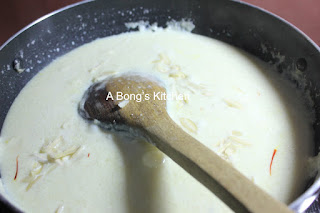Since I hail from the state of West Bengal, probably one would imagine that I will choose a city from Bengal as my most favourite city if I was asked to name mine. Well, had I not been to Delhi ever and had I not stayed here for so long, I would have done just that. Kolkatta was definitely on my mind but then in the end, I followed my heart and yes, I confess my love for "Dilli" - the heart of India. It took me some time to get used to Delhi and its ways but there ws something in it that had caught my attention. I instantly felt connected with the city. I had probably already fallen in love with the city the moment I landed here. It only took me a few years to realise the love. Now I feel more at home here than anywhere else. I had never been outside of Bengal before my marriage and so was taken aback by the fast moving lifestyle in Delhi. Initially I felt very out of place in the city and of course it took me a few years to get adjusted to the ways of the Dilliwallahs. There are still a few things that I dislike about Delhi but the good things outweigh them.
Being the capital city of India, Delhi is literally the heart of India. It has been a thriving city for several centuries. It continues to be one of India's most important cultural, political and commercial centres. It has got a rich cultural history dating back to the times of Mahabharata to almost 3000 years. Delhi used to be known by the name of Indraprastha in those days. As per the epic, Indraprastha or "city of Indra" was built by the Pandava brothers on the banks of the river Yamuna and used to be their capital. Centuries later the Moghuls made the city their seat of power. Delhi has always been culturally diverse and even though several rulers ruled over the city - from the Mauryas to the Moghuls to the Britishers, but the city managed to retain the essence of each bygone era. The city is dotted with several monuments from the Moghul era but in the vicinity, you will also find modern infrastructure with world class amenities, befitting the image of a capital city.
It's said the current city Delhi was built and re-built many times (some say five times) by its rulers. Then again in 1911 when King George visited India, the British empire made Delhi as its capital. During his tenure, the city underwent several changes and saw significant infrastructural development - important buildings like parliament and public offices were built. New Delhi was designed by British architects Edwin Lutyens and Herbert Baker and was inaugurated in 1931 by Lord Irwin, the then Viceroy of India. Even to this day, the city continues to witness massive expansion, modernisation and redevelopment activities.
Teeming with a population of about 25 million, it is the second most populated city in India. It is situated on the banks of Yamuna and is surrounded by the states of Punjab, Haryana and Uttar Pradesh. The city is the biggest and the most important commercial centre in North India and so almost every day, a huge number of people come from the bordering states to the capital looking for work. Be it educational and medical facilities or be it career opportunities, Delhi is indeed "the land of immense possibilities". They say that no one fails to get work and earn livelihood in the city.
Delhi is thoroughly connected to all parts of the country, be it by air or by road or by the Indian railway. The city has both domestic airports (two) and an International one - Indira Gandhi International Airport, which is said to be one of the busiest airports in Asia.Apart from the Indian railway network, Delhi also has a suburban railway system by which people from the city as well as from the neighbouring states travel to and from the city. It has five National Highways running through it - NH1, NH2, NH8, NH10 and NH24. DTC buses, autos and taxis and so also private RTB buses ply inside the city, thus connecting all parts of the city. Since 2002, the Delhi Metro has been the lifeline of Delhi. It has become one of the primary means of transportation in Delhi today and connects the cities to the neighbouring cities as well like Gurgaon, Noida and Ghaziabad.
P.S. : Written for Tata Motors' Made of Great Zonal wars. You can also go to their website http://madeofgreat.tatamotors.com/ and know more about it.
Being the capital city of India, Delhi is literally the heart of India. It has been a thriving city for several centuries. It continues to be one of India's most important cultural, political and commercial centres. It has got a rich cultural history dating back to the times of Mahabharata to almost 3000 years. Delhi used to be known by the name of Indraprastha in those days. As per the epic, Indraprastha or "city of Indra" was built by the Pandava brothers on the banks of the river Yamuna and used to be their capital. Centuries later the Moghuls made the city their seat of power. Delhi has always been culturally diverse and even though several rulers ruled over the city - from the Mauryas to the Moghuls to the Britishers, but the city managed to retain the essence of each bygone era. The city is dotted with several monuments from the Moghul era but in the vicinity, you will also find modern infrastructure with world class amenities, befitting the image of a capital city.
It's said the current city Delhi was built and re-built many times (some say five times) by its rulers. Then again in 1911 when King George visited India, the British empire made Delhi as its capital. During his tenure, the city underwent several changes and saw significant infrastructural development - important buildings like parliament and public offices were built. New Delhi was designed by British architects Edwin Lutyens and Herbert Baker and was inaugurated in 1931 by Lord Irwin, the then Viceroy of India. Even to this day, the city continues to witness massive expansion, modernisation and redevelopment activities.
 |
| (Photo sourced from https://upload.wikimedia.org/wikipedia/commons/4/49/Skyline_at_Rajiv_Chowk.JPG) |
Teeming with a population of about 25 million, it is the second most populated city in India. It is situated on the banks of Yamuna and is surrounded by the states of Punjab, Haryana and Uttar Pradesh. The city is the biggest and the most important commercial centre in North India and so almost every day, a huge number of people come from the bordering states to the capital looking for work. Be it educational and medical facilities or be it career opportunities, Delhi is indeed "the land of immense possibilities". They say that no one fails to get work and earn livelihood in the city.
 |
| (Photo sourced from http://www.naturalhighsafaris.com/cdn/cache/made/cdn/uploads/country_images/India/North/Delhi/India-Gate--Delhi-Photos2_940_529_80_s_c1.jpg ) |






































